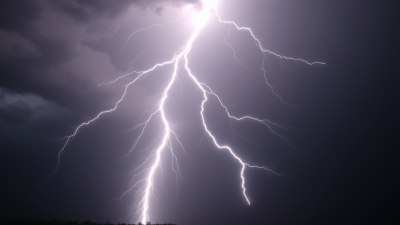Why Clouds Gather for Drama, Not Rain
Explore the meteorological reasons clouds gather without producing rain and the science behind cloudy dramatic skies.

Image by jannoon028 on Freepik
Clouds are one of nature's most captivating phenomena, often evoking a range of emotions from wonder to foreboding. Observers may look up to see thick, dramatic clouds gathering, hinting at an imminent storm, yet find that rain never actually falls. This intriguing situation raises the question: why do clouds sometimes gather for drama, not rain? Understanding this phenomenon requires exploring the science of cloud formation, the atmospheric conditions involved, and the various factors that determine whether a cloud will produce precipitation.
What Are Clouds?
At their simplest, clouds are collections of tiny water droplets or ice crystals suspended in the atmosphere. They form when moist air cools to its dew point—the temperature at which water vapor condenses into liquid droplets. This process happens frequently as air rises due to heating, topography, or weather fronts. Clouds are classified into different types based on their altitude, shape, and appearance, such as cumulus, stratus, cirrus, and nimbostratus.
The Formation of Clouds
Cloud formation starts with evaporation, the process by which water from oceans, lakes, rivers, and moist ground turns into water vapor and rises into the atmosphere. As warm, moist air ascends, it expands and cools due to lower pressure at higher altitudes. When this cooling air reaches saturation, the water vapor condenses around tiny particles called condensation nuclei—dust, pollen, or pollution. This condensation creates the visible cloud droplets. However, these droplets remain suspended because they are too small and light to fall immediately.
What Causes Clouds to Gather Dramatically?
Dramatic cloud formations often occur when large masses of air with differing temperatures and humidity meet. This clash can create visually striking patterns, such as towering cumulonimbus clouds or dense, layered stratus fields. Factors contributing to such dramatic gatherings include the lifting of warm moist air over cooler air masses, or rapid vertical movements caused by weather fronts or mountainous terrain. These dynamics cause clouds to thicken and spread out, creating an ominous or theatrical sky even if precipitation is absent.
The Role of Atmospheric Stability
A critical factor in whether clouds produce rain is atmospheric stability. Stable atmospheres resist vertical air movement, so clouds formed tend to be thin, stratified, and less likely to produce significant precipitation. In contrast, unstable atmospheres encourage vigorous upward motion, resulting in thicker clouds that often yield rain. Sometimes, atmospheric conditions promote cloud buildup at mid-levels without sufficient lift or instability to develop into rain-producing clouds. These conditions allow clouds to remain dense and dramatic but dry.
Why Do Some Clouds Fail to Produce Rain?
Even when clouds look thick and threatening, several factors can prevent rainfall. First, cloud droplets must grow large enough to overcome air resistance and fall to the ground. This requires the collision and coalescence of droplets into raindrops. If the droplets remain too small or evaporation occurs as they begin falling, precipitation won’t reach the surface. Second, dry air below the cloud base can absorb moisture from falling droplets, causing evaporation before raindrops complete their descent, a phenomenon called virga.
Virga: Rain That Doesn’t Reach the Ground
Virga refers to streaks or wisps of rain visible beneath clouds that evaporate before reaching the earth. It often appears as ghostly rain trails under cumulonimbus or altostratus clouds. This effect is common in arid or semi-arid regions where dry lower atmospheres prevent rain from reaching the surface. Virga can occur even in dramatically built clouds that appear ready to pour, providing an illusion of impending rain without actual wetness.
The Influence of Cloud Type on Rain Production
Not all clouds are equally capable of producing rain. For example, cirrus clouds, composed mostly of ice crystals high in the atmosphere, rarely generate precipitation that reaches the surface. Stratocumulus clouds may cover vast areas but often consist of small droplets that don’t coalesce into raindrops. The classic rain clouds are nimbostratus and cumulonimbus. Nimbostratus typically form thick, extensive layers producing steady rain, while cumulonimbus are tall, energetic clouds associated with thunderstorms and heavy showers. Dramatic clouds often belong to other categories, producing visual impact without rain.
Temperature and Moisture Levels Matter
Temperature profiles of the atmosphere significantly influence cloud behavior. Warm air can hold more moisture, thus encouraging rain formation if clouds develop sufficiently. However, if upper layers of the atmosphere are dry or warmer than the cloud base, precipitation formation may be inhibited. Moreover, saturation levels and humidity affect whether droplets can grow or evaporate rapidly. When moisture is insufficient or atmospheric layers are too warm, clouds thicken but stop short of producing rain.
The Role of Aerosols and Pollution
Aerosols—tiny particles suspended in the atmosphere—play a critical role in cloud formation and rain production. They serve as condensation nuclei around which water droplets form. Paradoxically, some types of aerosols, particularly those originating from pollution, can suppress rain formation. This happens when there are so many nuclei that water vapor is spread among numerous small droplets, hindering the growth of larger raindrops. This phenomenon can lead to clouds that appear thick and threatening but do not result in rainfall.
Geographical and Seasonal Influences
Cloud behavior varies with geographic location and season. In coastal or humid regions, air is more likely saturated, raising chances of rain during cloud gatherings. In contrast, continental interiors or dry climates often experience clouds that form and dissipate without rain due to limited moisture. Seasonal patterns affect temperature stratification and humidity, altering how clouds develop. For instance, dramatic cloud buildups in winter might not translate to rain like summer thunderstorms do.
Examples of Dramatic Yet Dry Cloud Events
Several well-documented meteorological events feature abundant clouds but scarce rainfall. For example, in some monsoon transition periods, clouds may gather heavily, casting dark shadows and creating an intense sky, yet produce limited rain. Similarly, wave clouds formed by atmospheric gravity waves can appear impressive but rarely precipitate. These occurrences showcase the complexity of cloud physics and atmospheric dynamics that decouple visual cloud mass from precipitation outcomes.
Human Perception and Cultural Interpretations
People’s interpretations of cloud gatherings often imbue them with symbolic significance. Dramatic clouds are frequently associated with impending storms or turmoil, influencing cultural expressions in art, literature, and folklore. This human tendency to read narratives into the sky contrasts with the scientific precision needed to predict rain. Understanding why clouds may appear tempestuous but not produce rain challenges common assumptions and highlights the nuanced interplay between atmospheric science and human perception.
The Importance of Modern Meteorology
Advances in meteorology, including satellite imagery, radar systems, and atmospheric modeling, have enhanced our ability to analyze cloud structures and predict rain. These tools reveal that visual cues alone are insufficient to determine precipitation. By measuring parameters such as cloud base and top altitude, droplet sizes, humidity profiles, and aerosol concentrations, meteorologists can better forecast whether dramatic clouds will produce rain or merely stage a spectacular show.
Practical Tips for Weather Prediction
For everyday weather prediction, noticing the type and behavior of clouds can provide clues about upcoming rain. Rapidly growing, towering cumulus clouds with a dark base indicate a higher likelihood of rain. Conversely, widespread flat gray clouds without vertical development often mean dry conditions. Paying attention to other factors like temperature, wind shifts, and humidity can improve forecasts. Still, some cloud gatherings remain deceptive, offering drama without precipitation.
To summarize, several scientific elements explain why clouds may assemble dramatically without releasing rain: atmospheric stability limits vertical growth; insufficient moisture prevents raindrop formation; dry air below clouds causes virga; aerosols may suppress droplet coalescence; and cloud type and temperature profiles influence precipitation potential. Collectively, these factors create scenarios where clouds look stormy but yield no rain, adding mystery and beauty to the sky.
Understanding this phenomenon deepens our appreciation for the complex atmospheric processes at play. It reminds us that not every threatening sky will result in a downpour and that clouds perform as much for visual spectacle as for weather production. The next time you witness a gripping cloudscape that holds its rain, consider the elegant balance of physics and meteorology that orchestrates this atmospheric drama.











